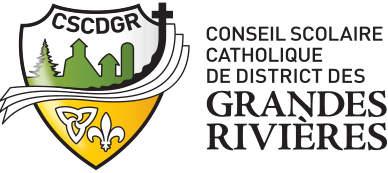
Responsibility, prudence and security
School transportation is a privilege offered to students. The well-being and safety of those who benefit from this service depend in large part on the cooperation of parents, drivers, board staff and students.
We invite you to consult the page New instructions for school transport to learn about the precautionary measures newly introduced in connection with the COVID-19 pandemic. Some of these guidelines may temporarily override those indicated on this page.
Surveillance system
A video surveillance system is installed on board school buses. This aims to ensure the safety of everyone on board the bus and to avoid problems of discipline and vandalism.
The security village
We ask parents to review the safety instructions to be observed around and inside the bus with their children on a regular basis. On the website The security village, Elmer the Safe Elephant introduces young children to school bus safety instructions.
clarifications
Residence (house): Permanent place of residence. This does not include second homes such as chalets, trailers, etc.
Embarkation and disembarkation point: For security purposes, one embarkation point and one disembarkation point only are assigned. These two points can be different, as long as they are the same every day. Round-trip transportation is provided only between the residence of the caregiver and the school. If a change is requested, it must be permanent; it cannot change from day to day.
Journey: The routes are determined by the Council. They can be changed, if necessary.
Responsibilities in order to travel safely
Responsibilities of the students:
- Follow the security regulations established by the Council.
- Listen to directions from the bus driver.
- Be at the boarding point before the bus arrives.
- Respect other students who travel by bus.
- Make the trip calm and pleasant.
- Wait calmly for the bus.
- Get on the bus, each in turn, without jostling.
- Walk to his seat calmly.
- Avoid obstructing the aisle at all times.
- Speak calmly to other students, without shouting.
- It is forbidden to eat or drink on board the bus in order to respect the policy # 6105 - Anaphylaxis (PDF not accessible)
- Keep body parts inside the bus at all times.
- Wait until the bus has come to a complete stop before getting up.
- Get off the bus without jostling.
- Get away from the bus once outside.
- Wait for the driver's signal before crossing safely in front of the bus.
- Look both ways before crossing the street to make sure there are no vehicles.
- Go immediately to the schoolyard or home.
- Refrain from bringing on the bus any items that are very large, bulky, dangerous or offensive.
- Remain seated and calm at all times.
Responsibilities of the bus driver and instructors:
- Maintain safety and order on the bus.
- Report any incident occurring on the school bus by completing the appropriate forms.
Responsibilities of the school principal:
The return trip on the school bus is considered an extension of the school day. The administration is therefore the person responsible for imposing the sanctions that apply to a student.
- Review school transportation expectations with students each year.
- Send a copy of the School transport flyer. Obtain the signature of the parent, guardian and student.
- Undertake an investigation of the student named in any safety incident report in schools.
- Follow the steps of progressive discipline by considering the mitigating factors.
- Inform the parents, guardians or tutors of the student's behavior and the disciplinary approach taken by the school administration.
Please note: If a student's behavior on the bus puts the safety and well-being of other students at risk, the school administration may impose a loss of the privilege to travel by bus. A student can also be suspended from school if such action is justified.
Responsibilities of parents, guardians or guardians:
- Although the rules are presented at the school, it is recommended that parents take the time necessary to discuss acceptable behaviors with their children in order to travel safely on the school bus.
- Sign the flyer and return it to school by the end of September, even if their child is not taking the bus.
- Make sure their child is at the boarding point before the bus arrives.
- Greet their child at the drop-off point if he or she is in kindergarten or garden.
- Provide safe transportation for their child in the event that the privilege of traveling on a school bus is lost.
- Take responsibility for transporting their child for parties, visits to friends or any other personal engagement.
- Take responsibility for deliberate damage caused to the bus by their child.


